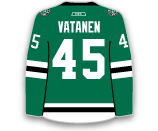Kostka was claimed off of waivers from Chicago last Sunday, but was a scratch on Thursday. He has two goals and one assist in nine games with the Blackhawks this season. He will dress as the Lightning's seventh defenseman today.

Kostka was claimed off of waivers from Chicago last Sunday, but was a scratch on Thursday. He has two goals and one assist in nine games with the Blackhawks this season. He will dress as the Lightning's seventh defenseman today.

Granlund was the Flames second round pick (45th overall) in 2011. He has 23 goals and 21 assists (44 points) in 50 games with Abbotsford (AHL) in his first North American season. Granlund is expected to centre the fourth line with Paul Byron and Westgarth on his wings.

Flyers head coach Craig Berube said that TImonen has "no legs" right now, but he will only sit vs. the Sharks and be back in the lineup on Saturday vs. the Rangers.
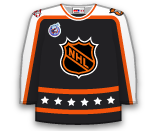
Tallinder was given the night off on Tuesday, but will play tonight and will likely replace John Scott on the blueline. Tallinder has two goals and five assists to go with a minus-15 rating this season. He is a potential deadline target for teams in need of blueline depth.
Timonen returned to practice with the Flyers on Wednesday, but skated on the extra pair with Hal Gill. Skating with Gill suggests that the Flyers may elect to give Timonen the night off on Thursday after playing six games with Finland at the Olympics. Monitor his status during Thursday's morning skate. The Flyers D-pairs will be: Meszaros-Streit, Coburn-Grossmann, Gustafsson-L. Schenn.

Rask started four of six games for Finland at the Olympics and did so while battling the flu. The Bruins will have him stay in Boston to rest and then likely get him back in the crease on Saturday when the B's host the Washington Capitlas. Niklas Svedberg, who was recalled on Monday, will serve as Johnson's backup in Buffalo.

The Sabres will give Tallinder the night off after representing Sweden at the Olympics in Sochi. The Sabres play again tomorrow, so they likely don't want him playing on consecutive nights after arriving back in the States just two days ago.
The Sabres will give Tallinder the night off after playing in the Olympics. Scott will play his regular position on the blueline for the first time this season.

In line rushes at Monday's practice, Nichushkin skated as an extra. With a team stacked with polished NHL and KHL veterans it is not surprising to see the 18-year-old sit on the big stage. He could see some action as the tournament progresses, but don't expect to see him on Thursday vs. Slovenia.

The expectation is that Semyon Varlamov will be Russia's starter because of more experienced international resume, but Bobrovsky made a great case for himself in the last month leading up to Sochi. Over the last 30 days, Bob has won nine of 13 starts while posting a 2.17 GAA and .931 SV%. In contrast, Varly has won eight of 12 games with a 2.79 GAA and .919 SV%.

Bouillon has been a healthy scratch in the last eight games, but will be back in the lineup tonight as a seventh defenseman. He has four assists and a minus-9 rating in 37 games this season.
Selanne did not accompany the team to Nashville on Friday as the club and he agreed earlier this week on him skipping the contest before he heads to Sochi to play for Finland. Selanne has been given a lot of rest this season so it is not surprising to see him get rest right before the Olympics.
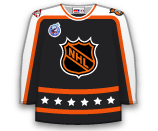
Salminen, 25, was never drafted into the NHL. He is currently in his first year in the KHL and plays with Jarko Immonen (Koivu's replacement) with Nizhny Novgorod Torpedo. He has tallied 18 goals and 28 assists (46 points) in 50 games this season.

Immonen, 30, was a Toronto Maple Leafs draft pick (8th Round / 254th overall) in 2002. He last played in the NHL in 2006-07, he only registered eight points (3G / 5A) in 20 career NHL games. He is currently in his fifth season in the KHL but his first with Nizhny Novgorod Torpedo. In 50 games this season he has 13 goals and 23 assists (36 points).

Sedin has been playing through a rib injury for much of the last month and was visibly in pain on the ice, prompting the Canucks to sit him out of their last two games before the break. It will be Johansson’s first Olympic appearance. is in his fourth NHL season and is steadily adding to his offensive totals again this year. In 58 games for the Capitals, Johansson has seven goals and 29 assists. His addition is the second injury replacement in a week that Sweden, favored to be medal contenders in Sochi, has needed to make for ailing veterans.

Kane found out about his grandfather Donald's death just before the Blackhawks' 5-3 victory over the Kings that night. He went on to record two goals and an assist, pointing to the sky after his first goal of the night to honor his grandfather. Friday is the Blackhawks last game before the Olympic break, so up next for Kane is Sochi with Team USA. Look for him to be back on the ice with the Blackhawks on February 27 in New York.

Claude Julien’s bunch will have to find a way to make up for the 25:57 average ice time that Chara logs every night. The B’s recently recalled David Warsofsky from Providence, and he’ll be back in the lineup for the next two games. He’s obviously not being called upon to replace Chara, as every player will need to chip in and pick up his game.
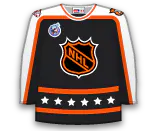
Travis Moen is out with a lower-body injury, so Weise appears to be in line to make his Montreal debut after being acquired on Monday.
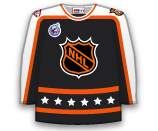
Sbisa has yet to record a point and is a minus-2 in three games since returning from a hand injury.
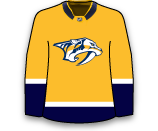
Vatanen has not played with the Ducks since January 17. The 22-year-old blueliner has six goals and eight assists in 39 games this season.
